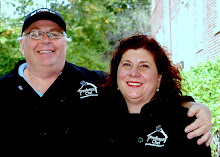
I have been eating a lot of Greek Yogurt lately, the price is a bit more than regular yogurt but I like the texture and health benefit of Greek yogurt! Greek yogurt is thicker and creamer but best of all has twice the protein of regular yogurt which keeps you fuller longer!! When the Greek Yogurt is on sale at the store you can pick it up for $1 for a 6 ounce container…a gallon of 2% milk is under $3. So we can make 21 6 ounce containers of yogurt and save $18 and make a better product. I read the label in the yogurt container and it’s not made with just milk and fruit…they add sugar, high fructose corn syrup and other chemicals and preservatives. Save money and eat healthy…sounds perfect for me.
The process is VERY easy.
You will need the following
One gallon of milk (whole, 2% or 1%)
One container of plain Greek yogurt
Mason jars (4 large qts holds a about a gallon of milk)
Cooler or insulated bag that will hold jars
Thermometer
Fill your mason jars with the milk leaving an 1 ½ inches of head space
Place the filled mason jars in a large stock pot with water and bring the temp of the milk to 180F
Remove the jars from the stock pot and place in a tub or sink with stopper. Add ice and water to the tub, keep checking the temperature of the milk till it comes down to 120F.
Take your container of plain yogurt and mix with some milk pour this in your mason jars with your heated milk bringing the level of the mixture almost to the top.
Cover the jars with a cap or plastic wrap and place in your cooler. If the entire cooler is not filled find some more mason jars and fill them with the hot water you used to heat the milk with cover those jars as well, you could also use a towel, you just want to fill in and insulate the vacant space in your cooler. Our cooler bag happened to fit into our oven so we place it in there for extra insulation.
The jars should remain untouched for 12 – 15 hours. Then refrigerate. You can stop at this point and have regular yogurt or you can strain for Greek style yogurt.
Place paper towel or butter muslin cloth in a strainer, place yogurt in the strainer and in about in hour you will have creamy style Greek yogurt.
I love to add fresh or frozen fruits and berries…it’s a great, healthy and inexpensive breakfast or snack!
TO SEE THE PROCESS CLICK ON THE PHOTO BELOW
 |
| Yogurt |














